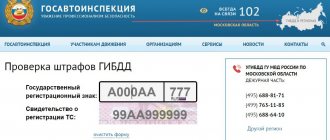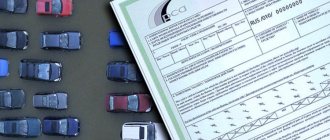Home \ Articles \ What is a tachograph and who needs it?
Drivers, especially those driving trucks and passenger buses, are well aware of what a tachograph is. These control devices have been used for a long time and are installed on equipment to monitor mileage, speed, travel time and other indicators.
Requirements for equipping cars with tachographs are becoming more stringent over time. This is due to the fact that traffic control using on-board recorders can reduce accident rates, ensuring safer driving.
What is a tachograph?
A tachograph is a device that is installed in a car and connected to its on-board network and engineering systems. The main function of the device is to automatically register vehicle movement parameters and store this data in memory with the ability to view it during testing.
Modern devices:
- The vehicle's mileage and driving speed are recorded.
- The time of driving, rest and other work performed by the driver is recorded.
- All data is registered, encrypted and stored in a form protected from editing.
The last point is especially important. The information recorded by the flight recorder is as objective as possible and cannot be changed. Therefore, it has evidentiary value and can be used in resolving controversial issues, including in court.
Advantages of the device
The device has many advantages:
- provides accurate recording of mileage and speed;
- The readings recorded by the device can become irrefutable evidence in a controversial situation, especially when it comes to an accident;
- The data obtained as a result of monitoring allows for clear accounting, since the device records all information about the driver’s work. It is possible to literally calculate the driver’s rest and working time literally by the minute;
- allows you to significantly improve the organization of the company’s work process, increasing its efficiency and productivity. The data simply cannot be manipulated or falsified, unlike a simple speedometer, on which you can easily add extra mileage;
- the ability to record all damage to the car and inform about it in a timely manner. This function helps to significantly reduce the risk of the car getting into an emergency;
- the presence of many additional functions. The device can be easily used as a speed limiter, as well as for switching equipment modes.
The design of the tachograph and the principle of its operation
The design of the flight recorder is quite simple. The main unit is located in the vehicle cabin so that the driver has access to the front panel with control buttons. Modern tachographs are equipped with screens that display basic information about the operation of the system.
The control system is connected to the machine's on-board network to provide power. Autonomous operation when the engine is turned off is guaranteed by the large battery capacity. In addition, a non-volatile memory module is built into the device, so the data recorded by the tachograph is saved in any case.
To transmit information about the movement of the vehicle, a speed sensor is connected to the device. The connection is made using standard connectors.
An important function of modern tachographs is access personalization. To use the device, you must install a personal driver card: only in this case will the information be correctly recorded and stored in memory. In addition to the driver’s tach card, cards of workshops, companies and controllers are used when working with devices.
Types of tachographs
Initially, cars were equipped with analog (disk, mechanical or electronic-mechanical) devices. Today, the use of analog recorders is not permitted by law. In addition, such tachographs are no longer produced, so it will be difficult to find a working model.
An alternative is digital recorders, which immediately collect and process information in digital form. In the Russian Federation, tachographs of the following brands are most often installed:
- CASBI
- SHTRIH-TahoRUS
- VDO DTCO
- Mercury
- ATOL et al.
It is also possible to install on machines some foreign-made devices that have been certified and approved for operation in Russia.
CIPF modules (NKM), their purpose
Depending on the flights the vehicle operates, the requirements for the brand and design of the flight recorder may vary:
- For cars that operate international flights, the use of AETR tachographs will be mandatory.
- Vehicles operating in the Russian Federation are equipped with tachographs with a CIPF/NKM module (navigation cryptographic protection module).
The CIPF unit is a cryptographic data protection system that is built into the flight recorder. This unit is highly autonomous and includes its own memory module, GLONASS receiver, chronometer and accelerometer. Power is also provided from a backup battery, so cryptographic protection works even when the flight recorder is de-energized.
The main function of CIPF is to collect information, encrypt it and store it. Data from the speed sensor enters the CIPF module, is processed by the microprocessor and stored in its memory in encrypted form. Changing this data is impossible, and for access with decryption you need to use a special electronic key.
The lifespan of the NCM module is limited. The element installed in the tachograph is activated when you start using the device. After this, once every 3 years it is necessary to replace the CIPF unit and activate the new module. Only workshops with a license from the FSB of the Russian Federation to work with cryptographic equipment can provide the service for replacing and activating NCM.
The essence of CIPF
This module stands for “cryptographic information protection tool.” Its main task is to protect the information recorded by the block from outside interference (correction).
Externally, the CIPF is a small housing element. It has a special connector for connecting an antenna and an interface output.
The advantages of the module include a very powerful cryptographic processor and non-volatile memory. The operation of CIPF units is regulated exclusively by security personnel.
Thus, the CIPF block performs three main tasks:
- protects data from correction;
- works with digital signature;
- reconciles already recorded information with the existing time stamp. This is necessary to prevent attempts to interfere from the outside and adjust time parameters.
On what vehicles is a tachograph installed?
The universal design of on-board recorders allows them to be installed on almost any car and other vehicles. But for some categories of transport, equipping with a control device will be mandatory by law.
The main criterion that determines whether a tachograph needs to be installed is the purpose of using the vehicle. If a car or bus is used for personal purposes, then it is not necessary to install the device (but you can - this way you will get additional information about the lust mode). But if the technology is used by a commercial organization, then it is impossible to do without a control device.
Note! If the vehicle is periodically operated in conditions that do not provide for the use of a tachograph, then it is advisable to install a recorder that supports the “OUT” mode. But this mode can only be activated when the car is not on a commercial flight - for example, it is being transported within the territory of an enterprise or to a workshop for maintenance. Using the “OUT” mode during freight or passenger transportation is a violation!
According to the laws, tachographs must be placed on:
- Trucks whose total weight exceeds 3.5 tons (categories N2, N3)
- Buses and minibuses, the design of which provides for the presence of 8 or more passenger seats, belonging to categories M2, M3 (this also applies to equipment used for transporting people on suburban and intracity routes).
- Trucks that transport cargo of various hazard classes.
- Dump trucks.
- Loader cranes.
The list of exceptions includes military equipment, equipment belonging to law enforcement agencies, construction and municipal special equipment, trolleybuses and some other vehicles,
Who should install the device?
First of all, this applies to trucking companies that engage in commercial transportation. As the law states, the need for installation is determined by the number of seats, the type of contents being transported, and the maximum weight of the vehicle.
The prerequisites for connecting a tachograph are:
- the presence of eight or more seats, excluding the driver's seat;
- vehicle carrying capacity of 3.5 tons and above;
- transportation of dangerous, poisonous, explosive, chemical cargo.
Checking the device by regulatory authorities
Having understood what a tachograph is and what vehicles it needs to be installed on, it is worth understanding the features of carrying out control measures.
Since for many categories of vehicles the presence of tachographs, as well as compliance with the requirements for their operation and operating modes, is mandatory, control is carried out on the routes. The check can only be carried out by traffic police officers and inspectors from Rostransnadzor. Moreover, if previously only joint checks were carried out (at weight and dimensional control points), today representatives of Rostransnadzor can check cars independently.
During the inspection, a representative of the regulatory authority is obliged to make sure that a working device is installed on the machine, the design of which complies with current standards. The integrity of the seals and the absence of traces of interference with the operation of the device are also checked.
Using the controller card, the following are checked:
- Time intervals for driving and rest.
- Compliance with the requirements for the use of individual tach cards.
- Compliance with device verification deadlines.
Tachograph installation
You will not be able to install the device in a car yourself; to do this, you must contact a service center that has the necessary permits. Such organizations are registered with the Federal Budgetary Institution "Rosavtotrans" and receive licenses to work with cryptographic equipment.
When preparing a car for installation, technicians select a place to install the device in such a way that the driver can carry out manipulations without being distracted from driving the car. To do this, you may need to install special brackets or lay cables to connect the system.
Next, the new device is unpacked and connected to the on-board network and speed sensor. All connections are carefully insulated.
The device itself and the cryptographic module are activated. Once activated, the device is calibrated to ensure the accuracy of the data collected.
The final stage of installation is sealing the device body. Installing seals is necessary in order to protect the system from tampering, attempts to edit data, or deliberate damage. The tachograph in a sealed case is installed in the socket and fixed.
Kinds
Today there are two main types of devices.
Analog tachographs.
True “pioneers” among such devices. But due to the obsolescence of the system, they are gradually going out of use.
Here the information is recorded on a pie chart taking into account the signals that come from analog type sensors. Naturally, the accuracy and reliability of such devices is very poor.
Digital tachographs.
More modern and efficient devices based on a cryptographic module.
The advantage of this system is greater reliability, accuracy of global positioning, and the ability to effectively store all information.
It is this type of product that is most popular today (and, as practice shows, quite deservedly so).
Calibration steps
Correct operation of the device (i.e. recording the most objective indicators of time, speed and mileage) is ensured by its periodic calibration. During this operation, the device is adjusted in such a way that the recorded data corresponds to the objective data with a minimum error.
The first time the system is calibrated during installation, then adjustment may be necessary during repairs, changing the technical characteristics of the vehicle, replacing wheels with a change in diameter, or installing a new speed sensor. It is also necessary to calibrate if the housing seal is broken and after a two-year period has passed since the last adjustment.
The tachograph is calibrated first on a stand and then on the road. At the first, bench stage:
- The integrity of the case, individual elements, and the safety of seals are monitored.
- The correct operation of the sensors is checked.
- Electrical circuits are tested.
The second stage - road tests - includes:
- Vehicle inspection.
- System programming.
- Control and adjustment of recording time, speed, distance traveled.
- Measurement of error.
After calibration is completed, all necessary information is entered into memory, and the case is sealed. A calibration mark with a fixed date is entered in the documentation for the device.
Cases in which tachograph calibration is necessary:
- First installation after receiving the device registration number (initial setup must be completed within 7 days).
- Gearbox repair.
- Replacing the speed sensor.
- Installation of the tachograph after its repair.
- Scheduled or unscheduled tire replacement.
- Deviation of time from real indicators by 20 minutes in any direction.
- Changing the registration number or driving parameters of the vehicle.
- Absence or damage to the integrity of tags or seals on the device.
Tachograph card and its purpose
Access to the system functionality and data stored in memory is impossible without using an electronic key card. Tachocards are equipped with special chips and have a limited lifespan, so they must be reissued periodically.
The most common type of card is the driver card. It is personalized, i.e. issued in the name of the person who will drive the vehicle with the flight recorder. The main task of the card is to identify the person who drove the car during a certain period of time.
Note! Using the device without a card or with someone else's electronic key is not allowed, and if such a fact is discovered, penalties are guaranteed to follow. The same applies to attempting to operate a tachograph with an expired driver card, so you should think about replacing the chip in advance.
In addition to this variety, the following are also used:
- Workshop maps - for installation, configuration and calibration.
- Enterprise cards - for accessing data stored in the device’s memory, decrypting and analyzing it (but not editing information).
- Controller cards – for accessing information stored in memory during control activities.
How to use a tachograph?
The design of flight recorders is simple, so learning to work with them is not difficult. But any driver must remember the basic algorithm, because its violation will definitely be recorded by the device. This may lead to sanctions - both in relation to the driver himself and in relation to company representatives.
| Number of drivers in the crew | |||
| 1 driver | 2 or more | ||
| Norm | Allowed | ||
| Max. continuous control time | 4.5 hours | 4.5 hours | |
| Min. break time | 45 minutes | divided into intervals no shorter than 15 minutes | 45 minutes |
| Max. management time per day | 9 o'clock | 10 hours x 2 days a week | >9 hours |
| Max. management time per week | 56 hours | 90 hours in any 2 weeks | 56 hours |
| Min. daily rest time | 11 o'clock | 9 hours 3 days a week, 12 hours in 2 intervals, one of which is not shorter than 9 hours | During 30 hours of work, each driver must have a rest of at least 9 hours continuously |
| Min. weekly rest time | 45 hours | at least 24 hours | 45 hours |
Before starting to drive the car, the driver must install an individual card in a free slot and activate it by entering a PIN code. After this, the driver’s name should appear on the screen - this indicates that. who has accepted the card and you can start working:
- First, the driver selects an activity before the start of the shift - “Rest” or “Work” (if before driving he was already performing his duties - for example, accepting cargo).
- When you turn on the ignition, the “Driving” mode is activated automatically, and an icon in the form of a steering wheel appears on the screen. The mode is maintained even if the car is parked with the engine running.
- The “Rest” mode is activated differently in different device models: either automatically, when the engine is turned off, or by pressing the corresponding button.
The card is removed from the slot by pressing a special button after completing the work shift.
Modern models of recorders are equipped with built-in thermal printers for daily printing of data from the device’s memory. Printing is also carried out at the request of employees of regulatory authorities, therefore it is important. So that the printer is in good working order and there is always paper in it (the required supply in the cabin is at least 2 rolls).
Fines for violations
The absence of a tachograph, its malfunction, or untimely verification/replacement of CIPF are considered violations from the point of view of the law. Violations also include operating the recorder without a driver card, with someone else’s or an expired card, or the inability to print data at the request of a traffic police officer.
Depending on who is found to be the culprit of the violation, Article 11.23 of the Code of Administrative Offenses establishes the following amounts of fines:
- up to 3 thousand rubles for individuals. Directly managing the vehicle.
- up to 10 thousand - for officials responsible for violations.
- up to 30 thousand - for legal entities.
| Uninstalled/non-functioning/non-compliant tachograph | ||
| Responsible person | Now | will become |
| Driver | from 1,000 to 3,000 rubles | from 3,000 to 5,000 rubles |
| Executive | from 5,000 to 10,000 rubles | from 7,000 to 10,000 rubles |
| Legal entity and individual entrepreneur | from 20,000 to 50,000 rubles or suspension of activities for up to 90 days | |
In the near future, it is planned to revise the amount of fines upward. It is also possible to impose additional sanctions, up to and including suspension of the company’s activities or revocation of its license.
| Failure to comply with the work and rest schedule of drivers | ||
| Responsible person | Now | will become |
| Driver | from 1,000 to 3,000 rubles | from 3,000 to 5,000 rubles |
| Executive | from 7,000 to 10,000 rubles | |
| Legal entity and individual entrepreneur | from 20,000 to 50,000 rubles or suspension of activities for up to 90 days | |
Knowing what a tachograph is, how it works, and how it should be used correctly, you can guarantee the absence of claims from the traffic police and other regulatory organizations. In addition, equipping equipment with recorders makes it possible to increase the efficiency and safety of transportation.
Features of use
Tachographs today are very popular devices. Of course, they will not protect you from a drunk driver, but they can save you from a number of fraudulent actions on his part (for example, draining gasoline) and speeding.
Today, many transport companies are trying to acquire these devices, understanding the effectiveness and prospects of the direction in relation to possible cost reduction.
How can you save money?
It is possible to reduce the cost of fines for speeding, prevent the driver from “draining” fuel for further sale, and make it impossible to twist the odometer and correct a number of other data.
Don't forget about the ability to take into account average speed and distance, which can be very useful for planning future trips.











